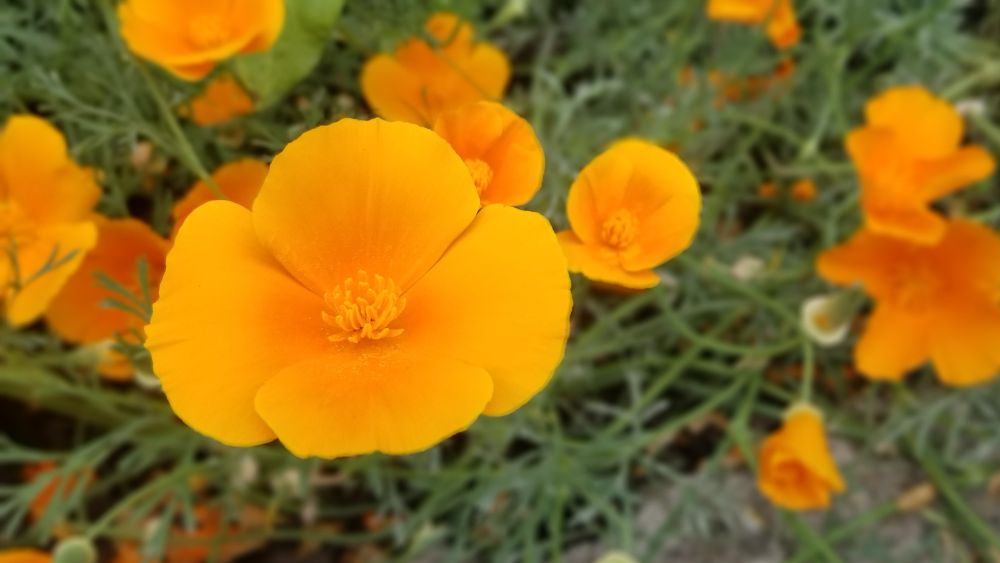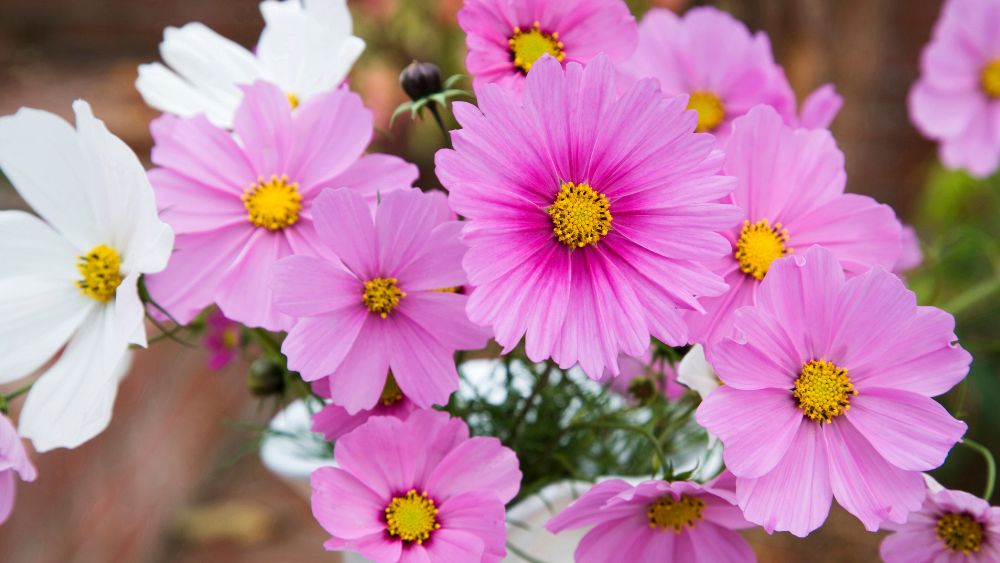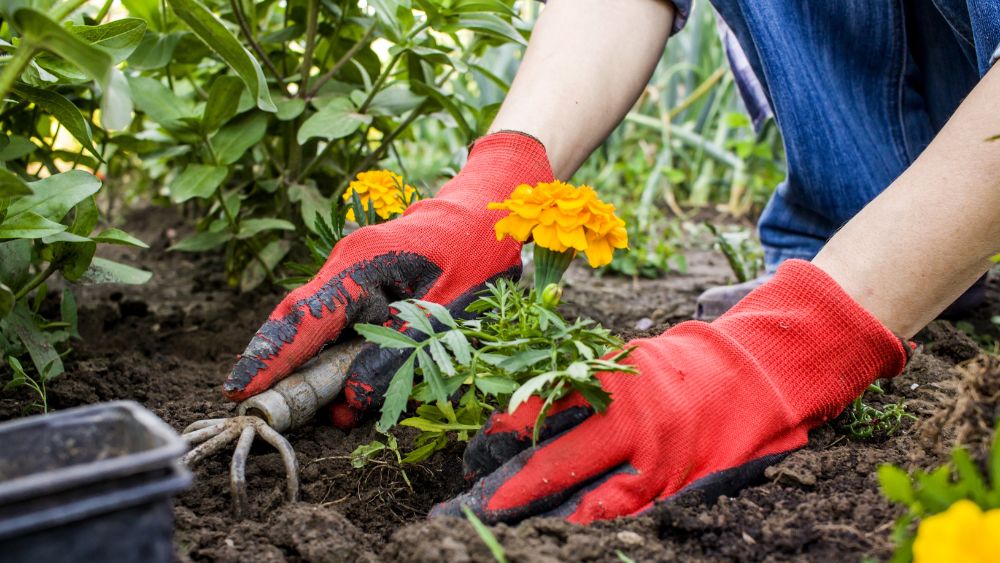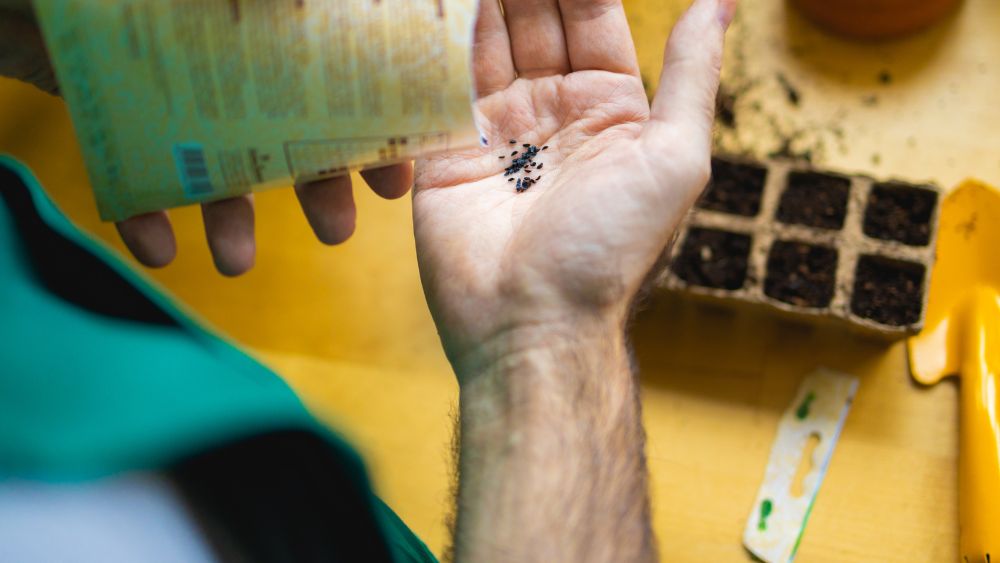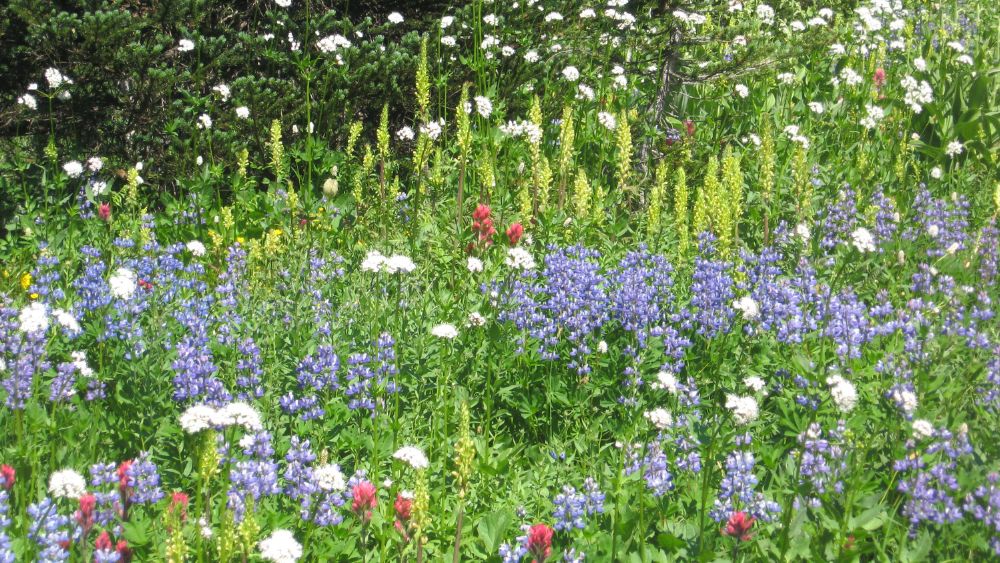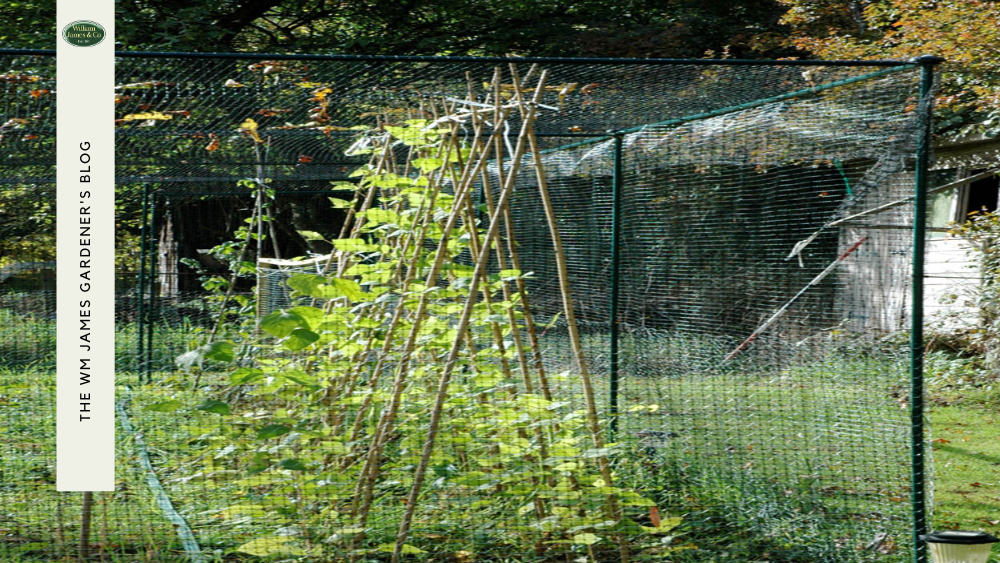We use cookies to make your experience better. To comply with the new e-Privacy directive, we need to ask for your consent to set the cookies. Learn more.
When to Plant Wildflowers at Home in the UK
- Admin
- WM James Gardening Blog
- 21 Aug 2023
-
82views
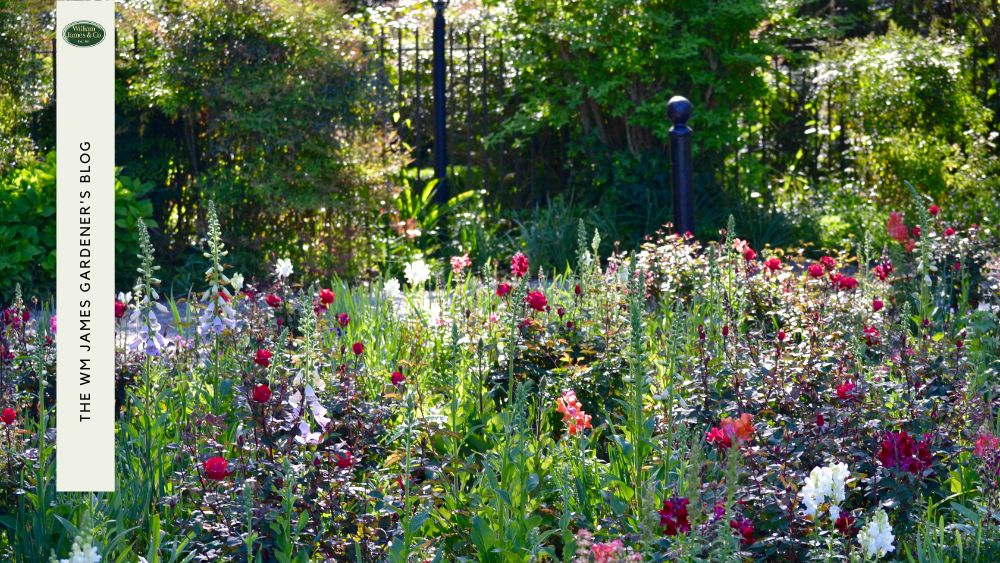
Our guide on planting wildflowers at home covers everything you need to know, from when to plant the seeds to how to look after them. Read on to find out more!
With talk turning towards how we can save bees and other native insects, many gardeners throughout the UK are trying to create natural landscapes that will benefit the ecosystem.
It’s easy to think that a natural garden means leaving it to grow by itself, but that’s not the case. Instead, you need to make sure that you plant the right wildflowers to suit your soil and that you cultivate a patch of paradise that will be ideal for you and any native visitors.
At WM James, we love wildflowers, which is why we’ve created this handy guide on how to grow them at home so that you can go about it the right way.
Is it Easy to Grow Wildflowers at Home?
Because they are native plants, wildflowers are incredibly easy to grow at home in your own garden. Unlike other plants, they don’t need as much pruning, deadheading or general maintenance.
The main thing is to make sure that you position your wildflowers correctly and that you choose the right species that will work well in the soil of your garden.
Many wildflowers grow well in low-quality soil, so you won’t need much compost, mulch or fertiliser and can still get a bumper crop of stunning flowers.
Types of Wildflowers You Can Grow at Home
There are many different species of wildflowers that you can grow at home in the UK, some of which we’ve listed out below…
California Poppy
California poppies are stunning, colourful poppies that grow well in the UK, making them ideal for low-maintenance gardens.
Distinguishable from native poppies due to their bright orange hue, California poppies are hardy and versatile and will grow in almost any soil with minimal care.
Coneflowers
Bright and exotic looking with their pink petals and distinctive cone-shaped head, coneflowers are a great choice for anyone looking to enhance their garden and liven up an empty space.
Coneflowers don’t flower well in the shade, and require a lot of light and warmth to be able to grow well, so it’s worth planting these seeds in the spring or summer and placing them in the warmest part of your garden.
Foxglove
With their trumpet-like flowers and long stems, foxgloves are a distinctive wildflower that grows taller than many of the other species on this list.
Also known as digitalis, foxgloves are an important pollinator for bees and many other flying insects, so they’re a vital part of any ecosystem, as well as a stunning addition to any garden.
Common Poppy
Common poppies are the classic poppy that most of us imagine when we hear the word: they have the stunning blood-red petals that we all know and love.
Native to the UK, the common poppy grows well in most areas and will return year after year if given the right conditions.
Cosmos
Cosmos is a children’s drawing of a flower that has come to life. With its round yellow centre and perfectly fanned-out petals in shades of pink and red, the flower is a classic staple of any English garden.
As cosmos are annual plants, they don’t come back every year and need to be resown in Spring. While that does mean a little extra work, it’s worth it for these glorious flowers.
Native vs Pictoral Wildflowers
Wildflowers come in various types, including native wildflowers, which grow naturally in the UK. There are also what is known as pictorial wildflowers, which are the beautiful wildflowers you often see that aren’t native to this country, but are a stunning addition to its meadows and gardens.
When you’re adding wildflowers to your garden, you might want to focus on native species, to create an entirely British garden space that feels like a typical English garden.
Alternatively, you might want to try adding in some pictorial, non-native flowers that will spice up your garden with a pop of colour and some unique shapes. Wildflower seed mixes can be a great way to add a variety of species to your garden.
Whatever you want to do with your garden, here’s a list of some of the most common native and pictorial wildflowers in the UK so that you can make the best decision for your garden design.
|
Native British Wildflowers |
Pictoral/Non-Native Wildflowers |
|
Common Poppies |
California Poppies |
|
Cowslip |
Montbretia |
|
Foxglove |
Red Valerian |
|
Cornflower |
Goat’s Rue |
|
Primrose |
Daffodil |
|
Bluebell |
Corn Marigold |
|
Honeysuckle |
Frog Orchids |
When to Plant Wildflower Seeds
Most wildflower seeds can be sown in the early spring, around March or April, so that they flower in time for the start of summer.
Some wildflowers can also be sown in September, just before the winter, and will bloom even through the colder months.
When you’re planting wildflower seeds, it’s important to understand the varieties you’re planting and whether they are perennial (come back each year), or annual or bi-annual, and will need resowing in order to grow again.
What You Need to Grow an at-Home Wildflower Meadow
Growing wildflowers in your garden isn’t all that hard, provided you have the right equipment and a strong knowledge of the type of soil you have and the plants that already grow there.
These are some of the important items you need to grow wildflowers:
Most of the equipment needed for planting wildflower seeds is the same as the items you usually use throughout the year on the rest of your garden. However, if you’ve got older items or just need an upgrade, then now could be the perfect time.
How to Grow Wildflowers at Home
Growing wildflowers at home can be done in a range of ways, and each has its pros and cons.
Keep reading for an insight into the main techniques used to grow wildflowers in the UK so that you can pick the best one for you.
Scattering Wildflower Seed Mix
Scattering your wildflower seeds is possibly the easiest method you can use to grow wildflowers in your garden.
It might be easy, but there’s a little more to it than just launching your seeds into your garden and hoping for the best.
Try these steps to get the best possible results.
- Decide on the area where you want to plant your wildflower seeds
- Scatter the seeds by hand as you walk across the space, trying to get even coverage
- Once the seeds are on the soil, rake them over so that they are hidden from hungry birds
- Keep the area well-watered until the wildflowers start to grow
It’s as simple as that! Scattering your wildflower seeds will give you a unique look, but it’s not the most precise method.
Sowing Wildflower Seeds into a Bed
If you want to create a truly unique flowerbed, then adding wildflowers could be the perfect solution. In this case, you’ll need to sow wildflower seeds a little more carefully to ensure that they grow where you want them to.
Thankfully, sowing wildflowers in a bed is not so different to sowing any other type of plant: you just need to be careful and take your time.
- Dig your soil over to create an even surface for your flower bed
- Sow your wildflower seeds by hand, planting them a few centimetres apart from each other
- Gently rake over your seeds to ensure they are well covered
- Water them regularly and watch the flower beds to see their progress
Adding wildflowers to your flowerbeds can be a great way to change things up and create a colourful border for your garden. It can take a little more time than simply scattering the seeds, but it’ll be worth the effort in the end.
Sowing Wildflower Seed in Seed Trays Indoors
In some cases, you might not have the space to put your wildflowers outside yet, especially if you’re currently renovating your garden. Using seed trays to grow your wildflowers indoors can be the perfect solution.
Seed trays can also be an ideal solution for anyone who wants to put their wildflowers in a pot to keep on a balcony or small garden. Whatever your situation, it’s easy to sow wildflowers in seed trays inside.
- Fill the seed tray with your soil and compost of choice and press down firmly
- Take a pinch of seeds and scatter them across the top of the compost, or, for larger seeds, place them individually in the tray
- Cover the seeds with a light dusting of compost so that they can’t be seen but not too deep
- Water the seed trays regularly and watch them to wait and see your new wildflowers grow
Growing wildflowers indoors is possibly one of the most labour-intensive strategies on this list, but it can be worth the effort.
How to Look After Wildflowers
Wildflowers are hardy plants that don’t usually require much care or maintenance. All you need to do is remove any unwanted weeds you notice in the soil around them, to allow the wildflowers to grow in peace.
Also, you might need to protect your wildflowers from pests. While they’re great for pollinating insects, wildflowers can attract a lot of other bugs that eat their leaves or generally cause mischief, so you might want to consider protecting them with some of our top-quality garden netting, including:
Diseases to Look Out For
While wildflowers are incredibly resilient, they can still be susceptible to some common plant diseases, such as mildew, fungal leaf spotting or blossom wilt.
When checking your wildflowers for diseases, look at the leaves and flowers to see if they are the right colour and if they have any spots on them.
If you notice signs of any disease in your wildflowers, you should remove the offending plant immediately and monitor the rest for signs of a spread.
Creating a Beautiful Wildflower Garden at Home
Ultimately, wildflowers are a beautiful addition to any garden. They’re not only a gorgeous rainbow of colour but also great for feeding many native insects and keeping the local ecosystem thriving.
As we’ve shown through these tips, planting wildflowers in your garden is easier than you might think, but it does still take some skill and planning.
If you’re looking for more ideas on how to incorporate wildflowers into your garden space, then get inspiration from our blog, where you can see how we create stunning outdoor spaces using our products.
Enjoy your stunning wildflower garden!
FAQs
How Long Do Wildflowers Take to Grow?
Generally speaking, most wildflower seeds will begin to bloom in around 60 to 80 days, but it does depend on the conditions, the type of wildflowers you plant and any other factors such as local pests.
When Do Wildflowers Bloom?
Wildflowers can bloom all year round, depending on the type of flower, but most start in around May or June and will last for several months until the colder weather sets in.
When Should You Sow Wildflowers?
Many wildflowers can be sown between March or April or later in the year, around September, but it depends on the type of seeds you are planting.
How Long Do Wildflowers Last?
Most wildflowers will bloom for 3 or 4 months and then die back. Many of these are perennial wildflowers, so they will return the next year to bloom again.
How Do You Dry Wildflowers?
Wildflowers can be dried by cutting the stems and stripping off the lower leaves. Then you can tie a rubber band around the end and hang the flowers upside down in a well-ventilated area. Alternatively, you can dry them between the pages of a heavy book, using kitchen towel to protect the writing to create stunning pressed flowers.
Why Are Wildflowers Important?
Wildflowers are an important part of our ecosystem, as they feed many insects and pollinators, such as butterflies and bees.



